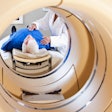Dear AuntMinnie Member,
CT contrast is a workhorse technology that's used every day in tens of thousands of imaging scans. But could we make it even better?
That's the tantalizing proposal of an article in our CT Digital Community: International editor Eric Barnes describes a new generation of nanoparticle-based CT contrast agents that ultimately could revolutionize the modality.
Nanoparticle CT contrast agents have longer circulation times in the body, and they can be targeted to specific cells or processes for molecular-style imaging. They can also be used simultaneously for multiple clinical applications.
They may still be a ways away from your imaging suite, however. Learn more by clicking here.
In other CT news, researchers from New York believe they may have found a way to make CT lung screening more cost-effective. They looked into whether patient demographics could provide insight into which suspicious nodules should be worked up and which ones can be followed on further screening rounds.
Find out how they did it by clicking here, or visit the community at ct.auntminnie.com.
CMS asked to cover more PET agents
A coalition of imaging industry groups has asked the U.S. Centers for Medicare and Medicaid Services (CMS) to loosen its coverage restrictions on PET radiopharmaceuticals.
While Medicare currently pays for four PET agents, CMS has coverage restrictions in place that prohibit payments for any other radiopharmaceuticals. The groups are asking CMS to revise that policy, given that PET has become an accepted part of the clinical mainstream, and new radiopharmaceuticals are on the horizon. Learn more by clicking here.
One of those agents, florbetapir, demonstrated its utility in predicting the onset of Alzheimer's disease in a new clinical study released this week in Neurology. Approved this spring by the U.S. Food and Drug Administration, florbetapir was used by researchers from Duke University to detect the presence of beta amyloid in patients with mild or no cognitive impairment.
Get the rest of the story by clicking here, or visit our Molecular Imaging Digital Community at molecular.auntminnie.com.




















